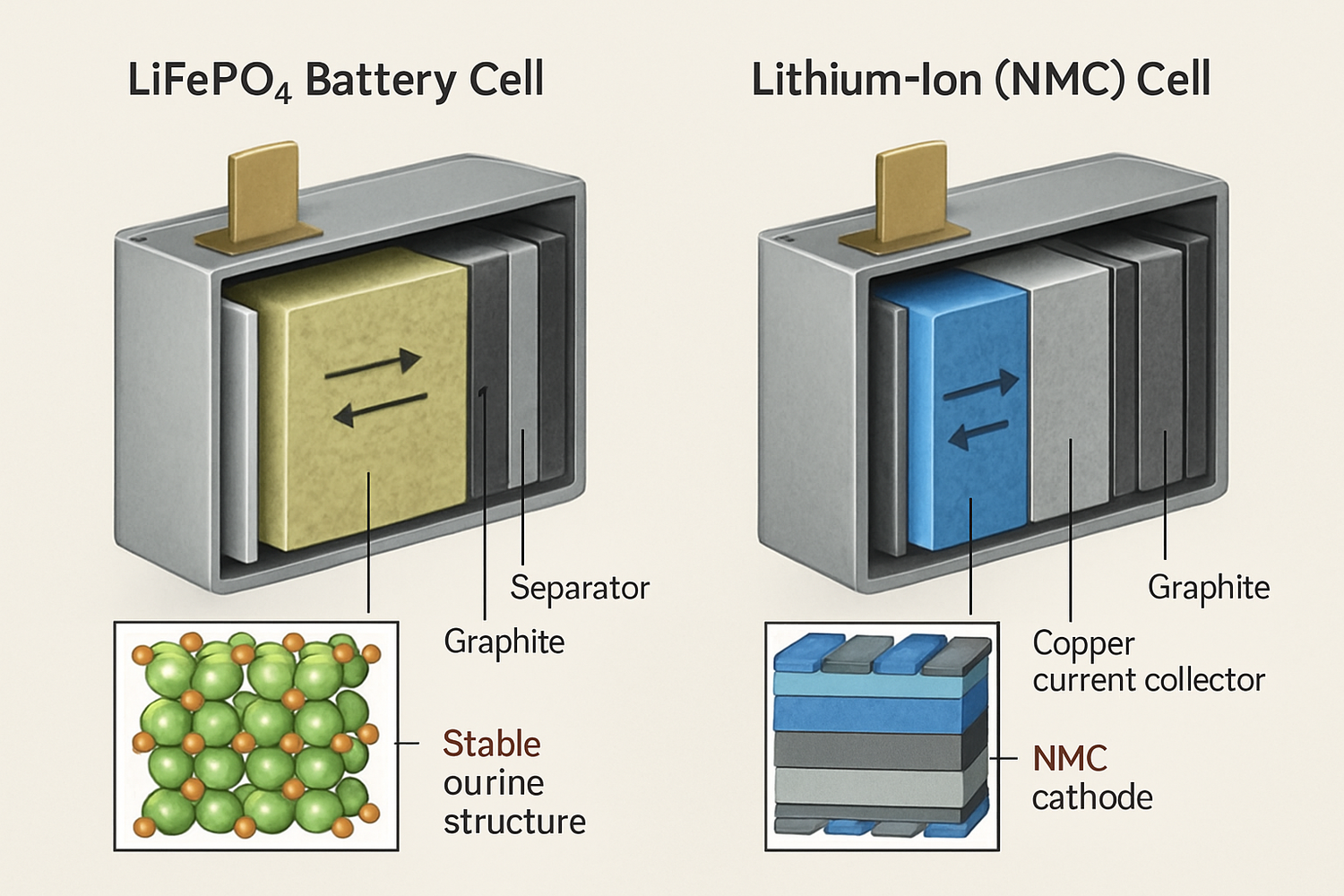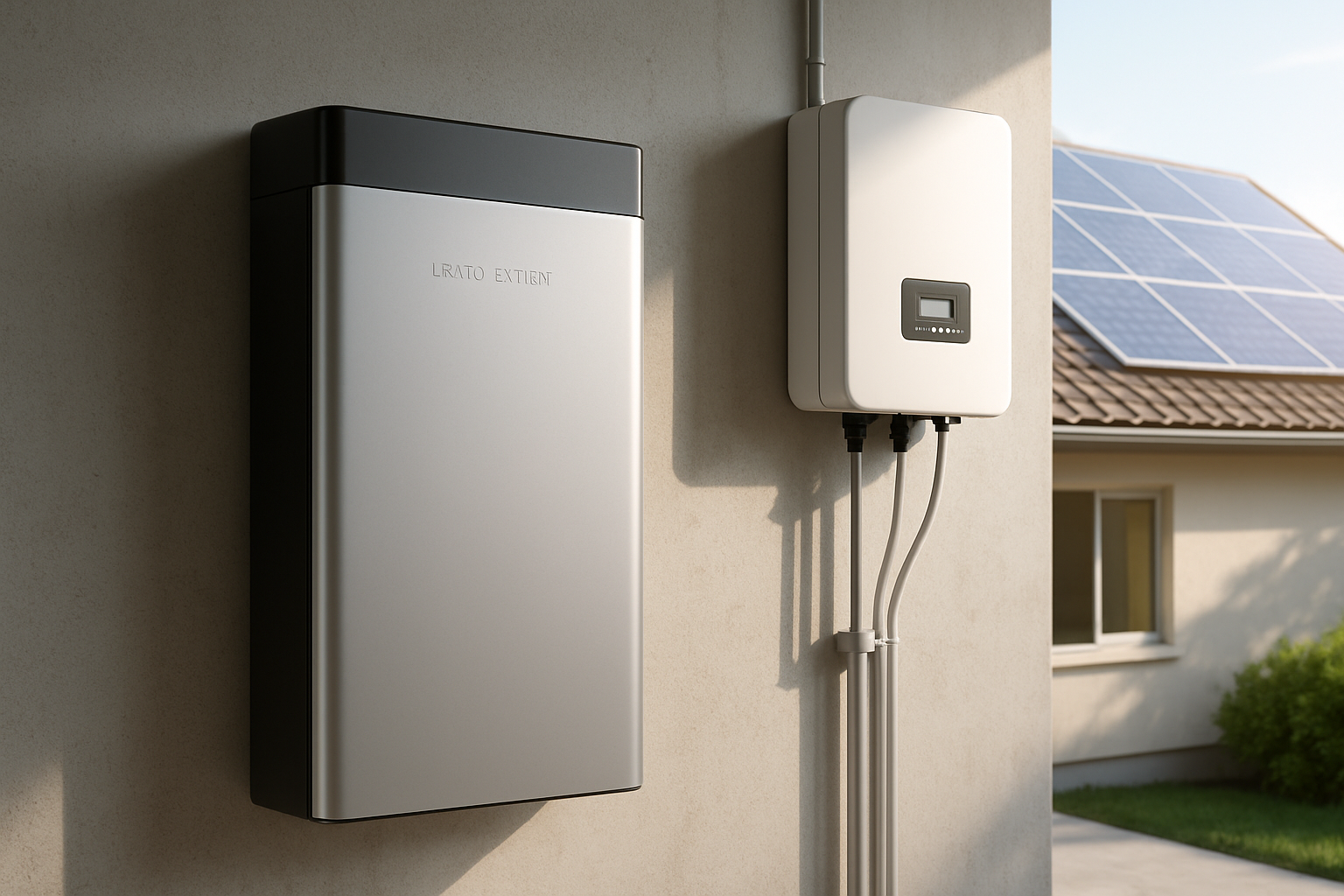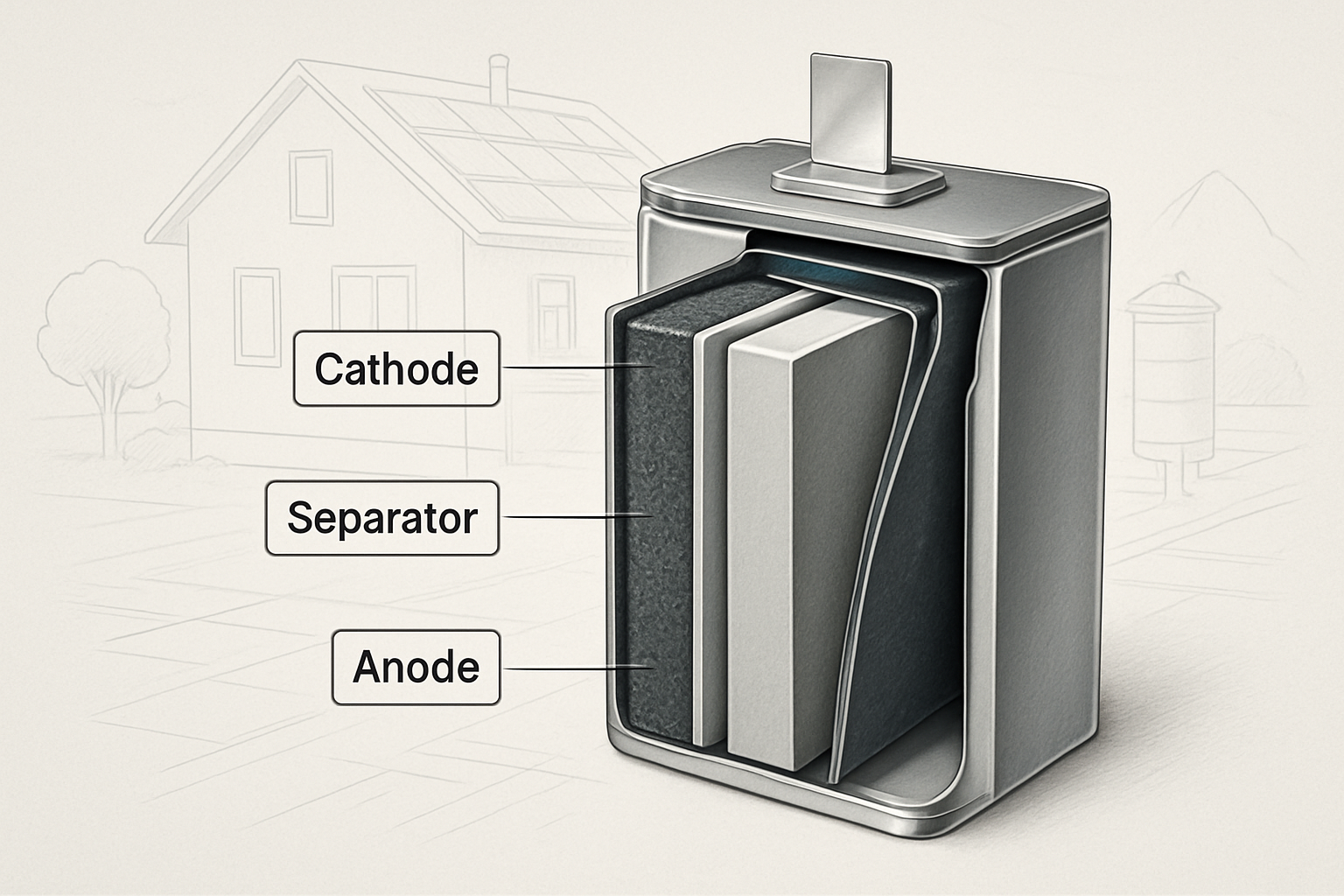Selecting the right battery for a solar energy system is a critical decision that impacts performance, safety, and long-term value. While 'lithium-ion' has become a catch-all term for modern batteries, it represents a diverse family of chemical compositions. For solar storage, the choice often comes down to Lithium Iron Phosphate (LiFePO4 or LFP) versus other common lithium-ion types, such as Nickel Manganese Cobalt (NMC). Understanding the fundamental differences is key to building a reliable and efficient energy storage solution.
Understanding the Core Differences in Lithium-Ion Chemistries
Not all lithium-ion batteries are created equal. The materials used in their cathodes dramatically alter their characteristics, making certain types better suited for specific applications. A home battery storage system has very different requirements from a smartphone or an electric car.
What Are 'Standard' Lithium-Ion Batteries?
The term 'lithium-ion' typically refers to batteries with cobalt-based cathodes, like NMC. These batteries are known for their high energy density, which allows them to store a lot of energy in a small, lightweight package. This trait makes them ideal for portable electronics and electric vehicles, where space and weight are primary constraints. However, this high energy density comes with trade-offs in terms of thermal stability and lifespan.
The LiFePO4 (LFP) Advantage: A Unique Chemical Makeup
LiFePO4 batteries use a cathode material made from lithium iron phosphate, a fundamentally different and more stable compound. This chemistry does not use cobalt, a material often associated with environmental and ethical issues in its supply chain. The crystalline structure of iron phosphate is exceptionally robust, making it resistant to breaking down under high temperatures or stress. This inherent stability is the foundation for LiFePO4's primary advantages in stationary solar storage applications.
A Head-to-Head Comparison for Solar Storage
When evaluating batteries for a home solar system, the priorities shift from energy density to safety, longevity, and overall reliability. Here’s a direct comparison of how LiFePO4 and NMC chemistries perform on these critical metrics.
| Feature | LiFePO4 (LFP) | Lithium-Ion (NMC) |
|---|---|---|
| Safety | Excellent; high thermal stability | Good; lower thermal runaway threshold |
| Cycle Life | 3,000 - 6,000+ cycles | 800 - 1,500 cycles |
| Core Materials | Iron, Phosphate | Nickel, Manganese, Cobalt |
| Environmental Impact | Lower; cobalt-free | Higher; contains cobalt |
| Energy Density | Lower | Higher |
Safety and Thermal Stability
Safety is the most important consideration for a home battery storage system. LiFePO4 batteries have a significant edge here. Their chemical structure is highly resistant to thermal runaway, a dangerous condition where a battery overheats uncontrollably. The ignition temperature for LFP is around 270°C (518°F), substantially higher than NMC's 210°C (410°F). This makes LiFePO4 an inherently safer choice for residential installations, where the battery will operate unattended for years.
Lifespan and Cycle Count
A battery's lifespan is measured in charge cycles. A cycle is one full charge and discharge. LiFePO4 batteries offer a dramatically longer cycle life, typically delivering between 3,000 and 6,000 full cycles before their capacity degrades significantly. In contrast, NMC batteries generally offer 800 to 1,500 cycles. This durability means a LiFePO4 battery can last for well over a decade in a typical solar installation, providing consistent performance year after year. A deeper understanding of performance metrics is crucial for evaluating any solar storage solution. For a detailed breakdown of these key indicators, the Ultimate Reference on Solar Storage Performance provides valuable insights.
Performance and Efficiency
LiFePO4 batteries provide a very stable voltage throughout the discharge cycle. This means your appliances receive consistent, reliable power without fluctuations. They also boast high round-trip efficiency, often exceeding 92%, ensuring that most of the solar energy stored is available for use. While NMC batteries also perform well, the long-term consistency and reliability of LFP are better suited for the demands of a daily-cycling home energy storage system.
Environmental Impact and Material Sourcing
The absence of cobalt in LiFePO4 batteries is a major advantage. Cobalt mining is concentrated in a few regions and is linked to severe environmental degradation and unethical labor practices. By using abundant, non-toxic materials like iron and phosphate, LiFePO4 technology presents a more sustainable and ethically sound option for energy storage.
The Financial Equation: Total Cost of Ownership
While the upfront price of a battery is an important factor, a true cost assessment looks at the value delivered over its entire lifespan. This is where the concept of Total Cost of Ownership (TCO) becomes essential.
Upfront Cost vs. Long-Term Value
Initially, a LiFePO4 battery might have a slightly higher purchase price than an NMC battery of the same capacity. However, its superior lifespan completely changes the economic calculation. Because a LiFePO4 battery can endure up to five times more cycles, its cost per kilowatt-hour stored over its lifetime is significantly lower. This long-term perspective reveals LiFePO4 as the more cost-effective investment. As the International Renewable Energy Agency (IRENA) notes, evaluating the Levelized Cost of Storage (LCOS) provides a more complete financial picture than focusing on initial costs alone.
Maintenance and Reliability
LiFePO4 batteries are virtually maintenance-free, requiring no regular servicing to maintain their performance. This 'install and forget' reliability not only adds convenience but also eliminates potential long-term service costs. The robust chemistry ensures dependable operation, providing peace of mind and uninterrupted power when you need it most.
Making the Right Choice for Your Solar System
For stationary energy storage, the technical evidence points clearly in one direction. The attributes that make NMC batteries ideal for a lightweight laptop are different from what is needed for a robust home energy system.
Why LiFePO4 is the Standard for Residential Solar
The combination of superior safety, exceptional longevity, and a lower total cost of ownership makes LiFePO4 the clear choice for residential and commercial solar storage. Its chemical stability provides a level of safety that is paramount in a home environment. The long cycle life ensures that the battery will serve your energy needs for many years, making it a sound financial investment that supports your goal of energy independence.
When Other Chemistries Might Be Considered
NMC and other high-energy-density lithium-ion chemistries remain the top choice for applications where weight and space are the most critical factors. This includes electric vehicles, drones, and portable consumer electronics. In these cases, the need to pack maximum energy into the smallest possible space outweighs the benefits of the extended lifespan and thermal stability offered by LiFePO4.
A Clear Decision for Energy Independence
When building a solar energy system for your home or business, the goal is reliable, safe, and cost-effective power for the long term. While the term 'lithium-ion' covers many technologies, the specific chemistry of LiFePO4 stands out. Its unmatched safety profile, extensive cycle life, and positive environmental credentials provide a powerful and dependable foundation for achieving energy independence. It represents a strategic investment in a resilient and sustainable energy future.
Frequently Asked Questions
Is LiFePO4 safer than other lithium-ion batteries?
Yes, LiFePO4 is widely considered the safest of the common lithium-ion chemistries. Its strong chemical bonds and higher thermal runaway threshold of 270°C make it far less prone to overheating compared to cobalt-based batteries.
Do LiFePO4 batteries last longer?
Absolutely. LiFePO4 batteries offer a significantly longer lifespan, typically providing 3,000 to 6,000 charge cycles, whereas other chemistries like NMC may only last for 800 to 1,500 cycles. This durability makes them ideal for the daily charging and discharging required in a solar storage system.
Are LiFePO4 batteries more expensive?
The initial purchase price of a LiFePO4 battery can be slightly higher than some other lithium-ion types. However, their much longer lifespan results in a lower total cost of ownership, as the cost per cycle is substantially less. This makes them a more economical choice over the long term.





Leave a comment
All comments are moderated before being published.
This site is protected by hCaptcha and the hCaptcha Privacy Policy and Terms of Service apply.